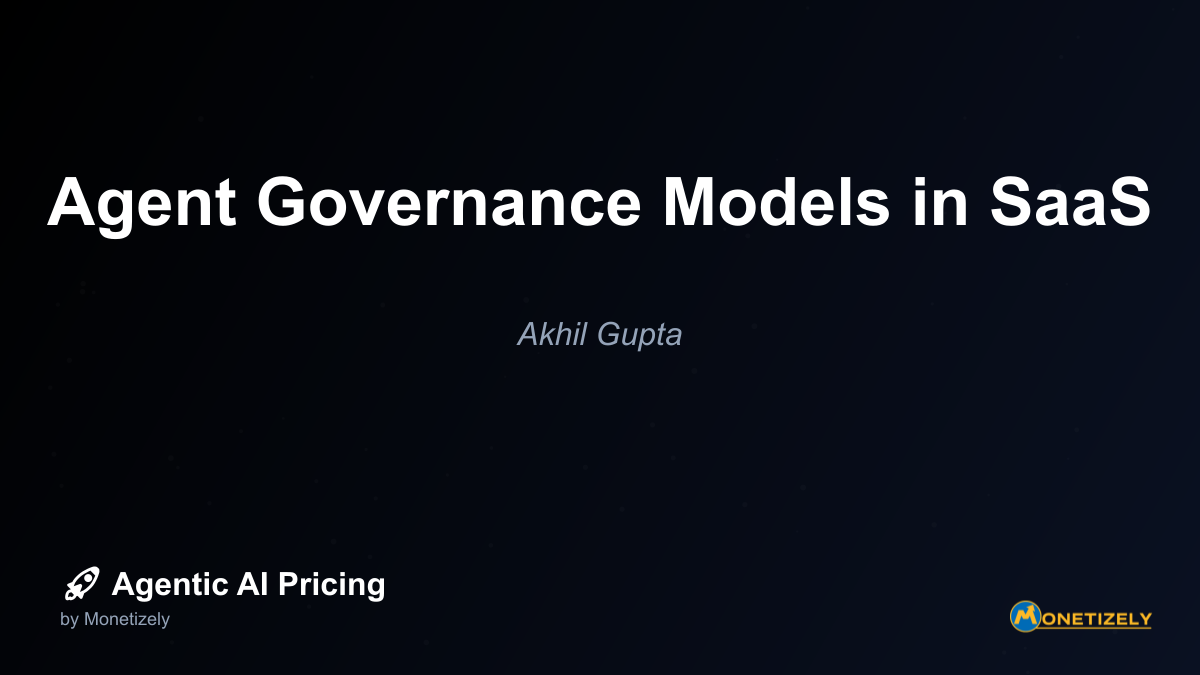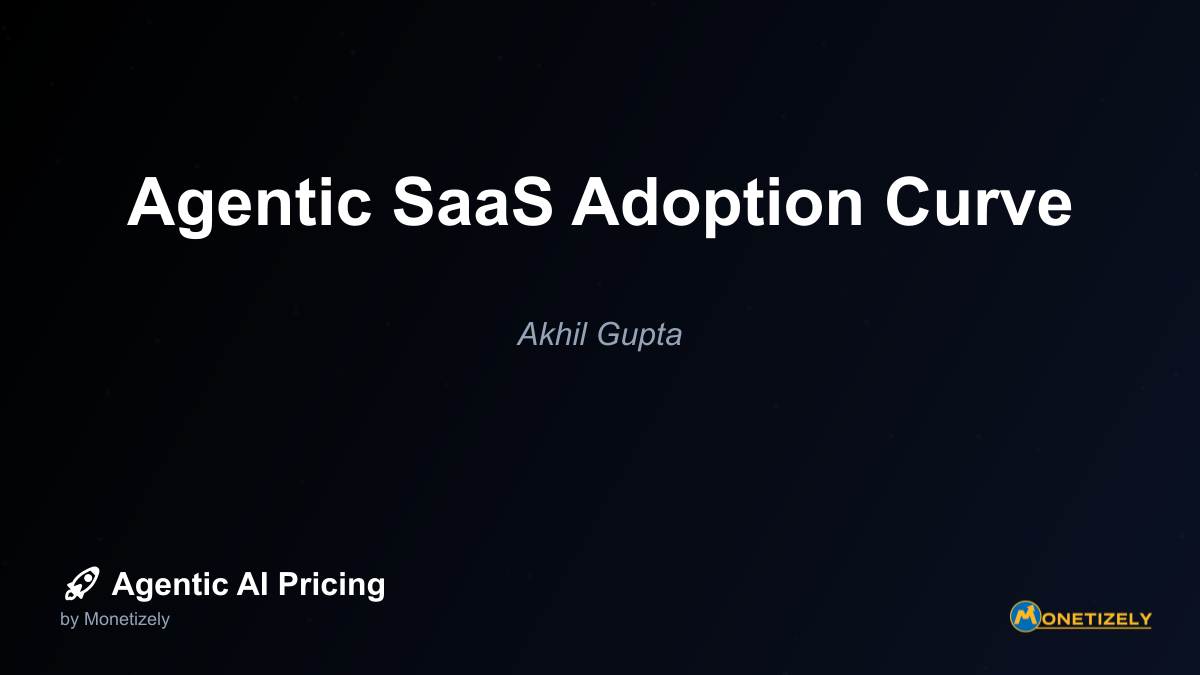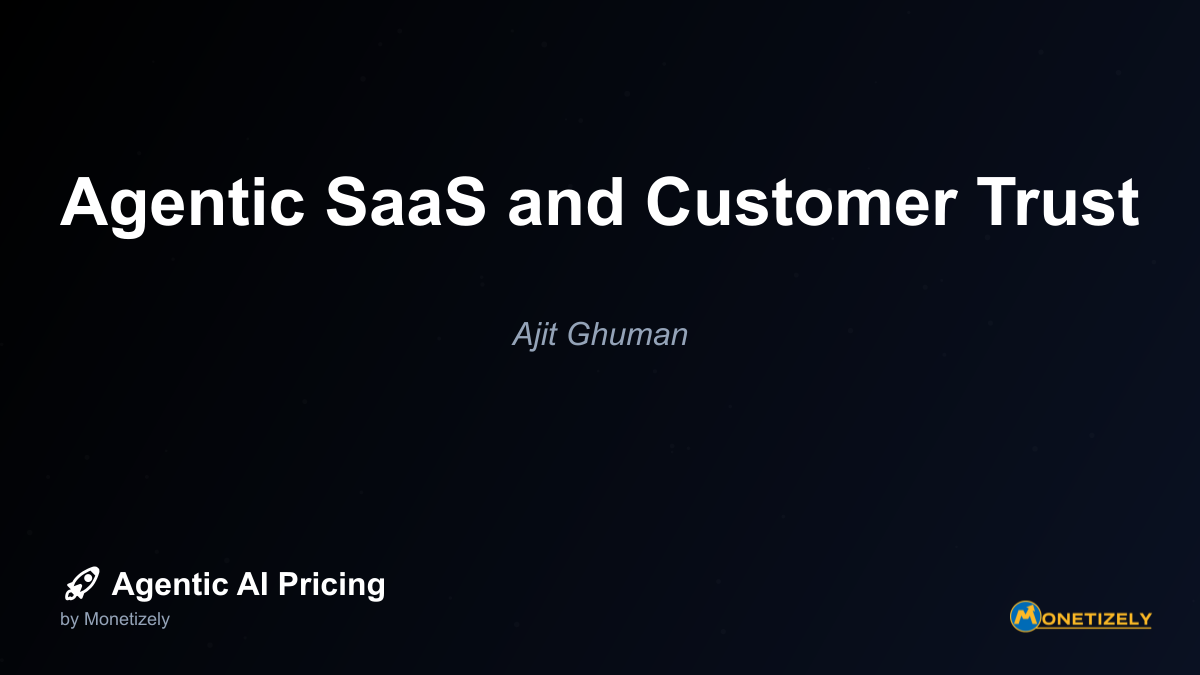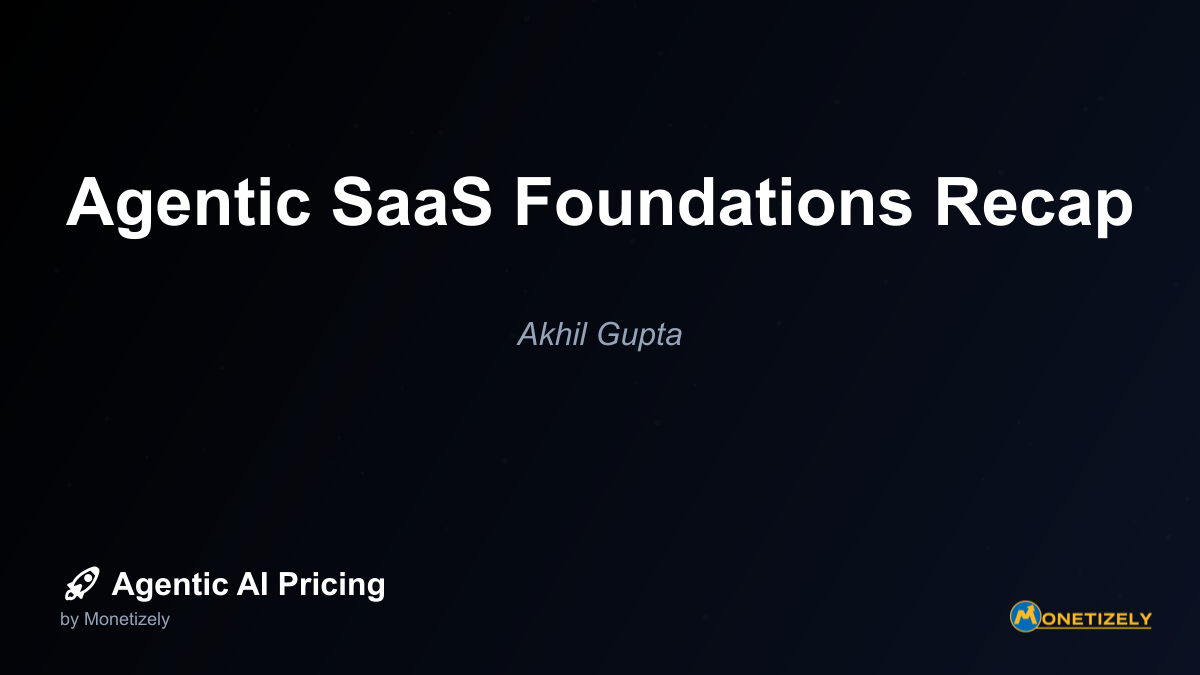· Ajit Ghuman · Agentic SaaS Fundamentals · 6 min read
From Workflows to Agents: Paradigm Shift
AI and SaaS Pricing Masterclass
Learn the art of strategic pricing directly from industry experts. Our comprehensive course provides frameworks and methodologies for optimizing your pricing strategy in the evolving AI landscape. Earn a professional certification that can be imported directly to your LinkedIn profile.
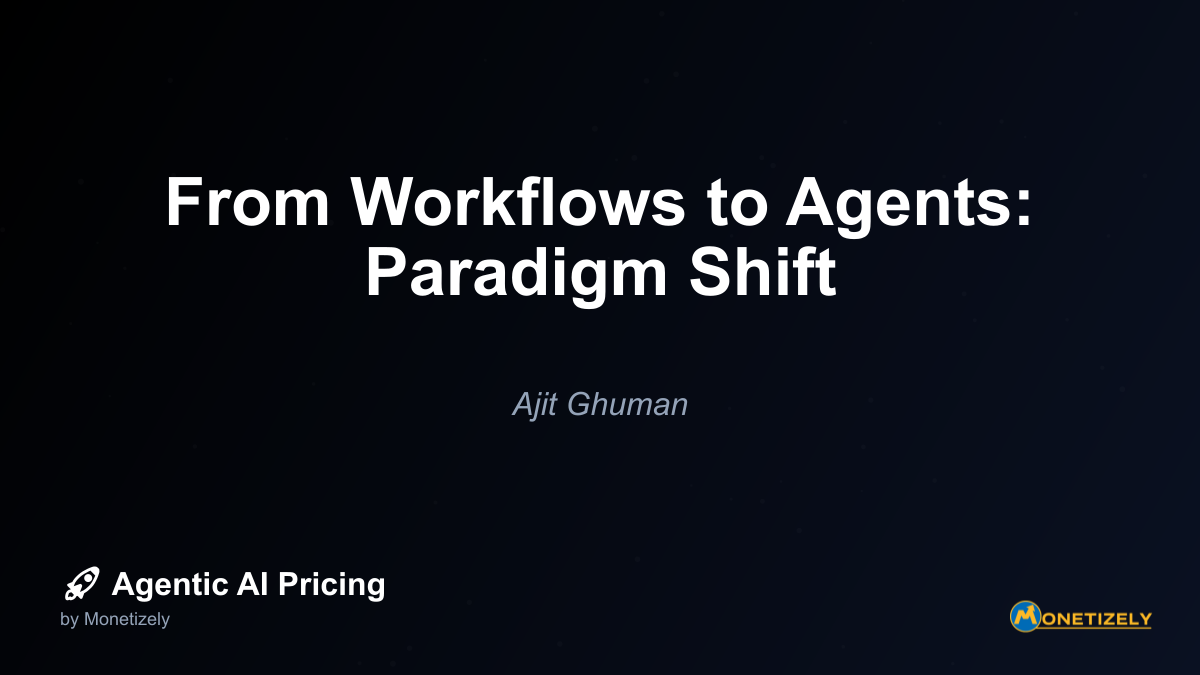
Pricing Implications: From Subscription to Value-Based Models
The shift from workflows to agents necessitates a fundamental rethinking of pricing strategies. Traditional SaaS workflow automation has typically been priced using straightforward subscription models based on:
- Number of users
- Volume of workflows
- Transaction throughput
- Storage requirements
- Support tiers
These metrics worked well because they aligned with the cost structure of delivering workflow software and scaled predictably with customer usage.
The Value Pricing Challenge for Agentic Systems
Agentic AI systems, however, create value in ways that don’t necessarily correlate with traditional usage metrics. An agent might deliver enormous business value with minimal computational resources, or it might require significant resources to deliver modest value.
This disconnect has given rise to more sophisticated pricing approaches for agentic systems:
Value-Based Pricing: Charging based on measurable business outcomes rather than system usage. For example, a sales assistant agent might be priced as a percentage of incremental revenue generated.
Value-based pricing models for agentic AI are increasingly becoming the gold standard, as they align vendor incentives with customer success while capturing a fair portion of the value created.
Hybrid Models: Combining base subscription fees with outcome-based components to balance predictable revenue with value capture.
Tiered Autonomy Pricing: Charging different rates based on the level of autonomy granted to the agent, with higher prices for greater decision-making authority.
API-Based Consumption: Pricing based on the specific capabilities accessed, such as reasoning operations, knowledge retrieval, or action execution.
Outcome-Based Guarantees: Offering performance guarantees with pricing adjustments based on whether the agent meets agreed-upon objectives.
A Chief Revenue Officer at an AI software company explained their approach: “We started with traditional SaaS pricing for our agent platform but quickly realized it didn’t reflect the value we were creating. We now use a hybrid model with a base subscription plus variable fees tied to specific business outcomes. Our customers prefer this because it aligns our success with theirs.”
Organizational Impact: Beyond Technology
The transition from workflows to agents represents more than a technological shift—it fundamentally changes how organizations operate and create value.
Workforce Transformation
As agents take on increasingly complex tasks, the human workforce evolves in several ways:
Skill Elevation: Employees shift from performing routine tasks to higher-order activities like strategy, creativity, and relationship building.
Agent Management: New roles emerge focused on training, monitoring, and optimizing agent performance.
Cross-Functional Collaboration: Breaking down silos becomes essential as agents operate across traditional departmental boundaries.
Ethical Oversight: Organizations need specialists who ensure agent behavior aligns with company values and regulatory requirements.
Process Reimagination
With agents capable of end-to-end process execution, organizations can reimagine their operations:
Customer-Centric Design: Processes can be designed around customer needs rather than internal constraints.
Continuous Optimization: Agents can identify and implement improvements without waiting for formal process reviews.
Exception Handling: Rather than designing processes for the average case, organizations can create adaptive systems that handle exceptions gracefully.
Real-Time Responsiveness: Decision-making can happen at the moment of need rather than according to predetermined schedules.
Implementation Strategies: Bridging the Paradigms
Few organizations can—or should—leap directly from traditional workflows to fully autonomous agents. Instead, a phased approach often works best:
Phase 1: Augmented Workflows
Begin by enhancing existing workflows with intelligent components that add flexibility without completely replacing the structure:
- Add natural language processing to improve user interactions
- Implement predictive analytics to anticipate process deviations
- Create smart routing that dynamically assigns tasks based on context
- Develop exception handling that suggests solutions for non-standard cases
Phase 2: Supervised Agents
Introduce agents that can operate semi-autonomously while maintaining human oversight:
- Deploy agents that recommend actions but require approval for execution
- Implement monitoring systems that flag unusual agent decisions for review
- Create feedback mechanisms that help agents learn from human corrections
- Develop clear escalation paths for situations beyond agent capabilities
Phase 3: Autonomous Agents
Gradually expand agent autonomy as confidence and capabilities grow:
- Grant complete autonomy for well-defined, lower-risk tasks
- Implement governance frameworks that set boundaries for agent decision-making
- Create agent collectives that can collaborate to solve complex problems
- Develop systems for continuous evaluation and improvement of agent performance
A CTO who led a workflow-to-agent transition shared: “Our biggest mistake was trying to boil the ocean. When we stepped back and identified specific processes where agents could add immediate value while keeping humans in the loop, adoption accelerated dramatically. Now we’re gradually expanding agent autonomy as our team builds trust in the system.”
Measuring Success: New Metrics for a New Paradigm
As organizations transition from workflows to agents, traditional performance metrics become insufficient. New metrics that reflect the value of agent-based systems include:
Autonomy Rate: Percentage of tasks completed without human intervention
Decision Quality: Accuracy and appropriateness of agent-made decisions
Adaptation Speed: How quickly agents adjust to changing conditions
Value Creation: Business outcomes directly attributable to agent actions
User Satisfaction: How users rate their experiences with agent interactions
Process Innovation: New approaches discovered and implemented by agents
These metrics help organizations track progress in their transition and quantify the benefits of the new paradigm.
Ethical Considerations in the Age of Agents
The shift to autonomous agents raises important ethical questions that organizations must address:
Transparency: Can users understand why agents make specific decisions?
Accountability: Who is responsible when an agent makes a harmful decision?
Privacy: How do we ensure agents respect sensitive information?
Bias: How do we prevent agents from perpetuating or amplifying existing biases?
Human Dignity: How do we ensure agents enhance rather than diminish the role of humans?
Organizations that proactively address these questions will be better positioned to build trust with users and stakeholders.
The Future: Collaborative Intelligence
The ultimate destination isn’t a world where agents replace humans but one where they complement human capabilities. This collaborative intelligence model combines the best of both worlds:
- Agents handle routine, data-intensive, and computational tasks
- Humans provide creativity, empathy, ethical judgment, and strategic direction
- Together, they achieve outcomes neither could reach alone
Agentic AI pricing models will continue to evolve to reflect this collaborative relationship, moving beyond simple resource consumption to capture the unique value created through human-agent partnerships.
Conclusion: Embracing the Agent Paradigm
The transition from workflows to agents represents one of the most significant shifts in enterprise software since the advent of cloud computing. Organizations that recognize and adapt to this paradigm shift will gain substantial advantages in agility, innovation, and customer experience.
Successful adoption requires more than technological implementation—it demands new thinking about processes, organizational structures, skills, and business models. The pricing strategies for these systems must likewise evolve, moving from simplistic subscription models to sophisticated approaches that align with the value created.
As we navigate this transition, organizations should:
- Start with clear use cases where agent autonomy delivers tangible benefits
- Implement thoughtful change management to build trust in agent capabilities
- Develop new metrics that capture the full value of the agent paradigm
- Address ethical considerations proactively rather than reactively
- Evolve pricing strategies to align with the unique value proposition of agents
The organizations that master this paradigm shift won’t just automate more effectively—they’ll fundamentally transform how they create value in the digital economy.
Co-Founder & CEO
Ajit is the author of Price To Scale, a top book on SaaS Pricing and is the Founder of Monetizely. Ajit has led and worked in pricing and product marketing at firms like Twilio, Narvar and Medallia. His work has been featured in Forbes and VentureBeat. Ajit regularly consults with software companies from Seed stage to post-IPO on pricing strategy. Ajit is also a highly-rated co-instructor for 'The Art of SaaS Pricing and Monetization' on Maven.
Pricing Strategy Audit
Let our experts analyze your current pricing strategy and identify opportunities for improvement. Our data-driven assessment will help you unlock untapped revenue potential and optimize your AI pricing approach.

